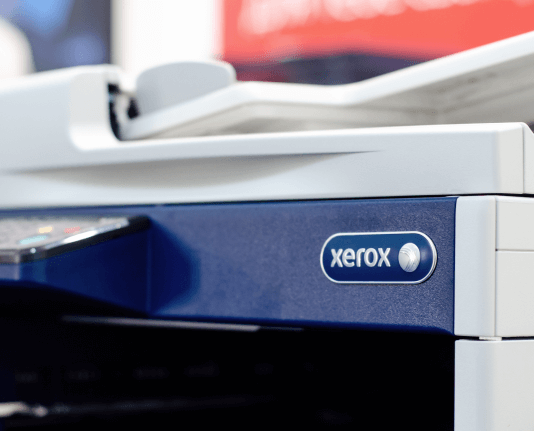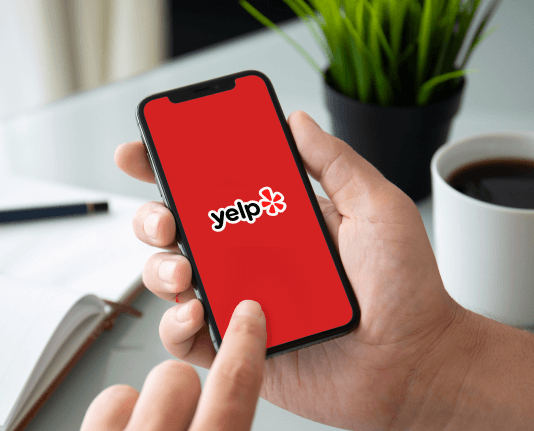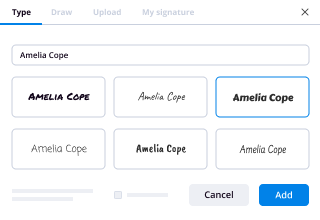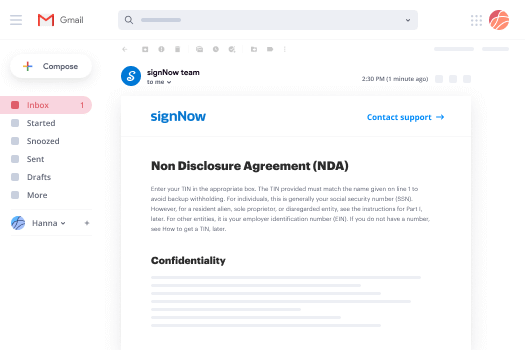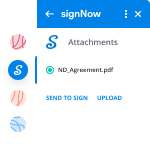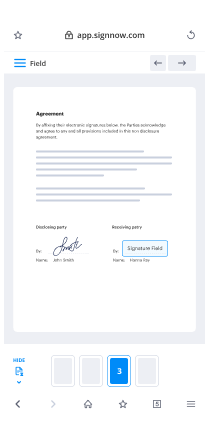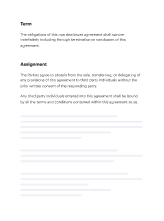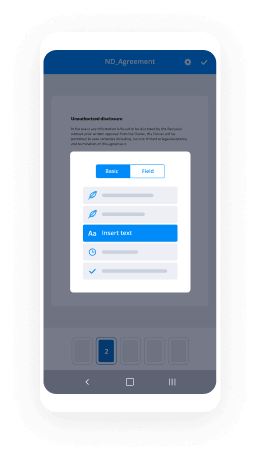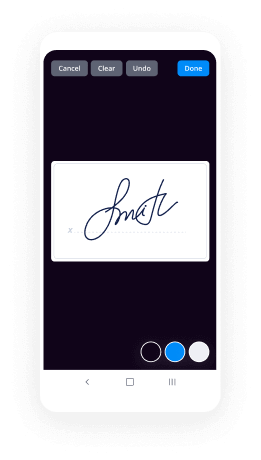Help Me With Integrate eSign in Oracle
Contact Sales
Make the most out of your eSignature workflows with airSlate SignNow
Extensive suite of eSignature tools
Robust integration and API capabilities
Advanced security and compliance
Various collaboration tools
Enjoyable and stress-free signing experience
Extensive support
Keep your eSignature workflows on track
Our user reviews speak for themselves






Digital customer support oracle: Utilizing airSlate SignNow advantages
In today's rapid-paced commercial landscape, effective digital customer support is essential. One resource that distinguishes itself in enhancing this support is airSlate SignNow, which provides a seamless platform for handling electronic signatures and document workflows. With its intuitive interface and powerful features, it assists businesses in optimizing their operations and increasing customer satisfaction.
Comprehending the advantages of digital customer support oracle with airSlate SignNow
- Access the airSlate SignNow website using your chosen web browser.
- Create a complimentary trial account or log in if you already possess one.
- Upload the document you want to sign or dispatch for signatures.
- If this document will be utilized frequently, transform it into a template for future applications.
- Open the uploaded document and modify it by adding fillable fields or necessary details.
- Sign the document yourself and assign specific fields for your recipients' signatures.
- Click 'Continue' to set up and send an invitation for electronic signatures.
Employing airSlate SignNow signNowly enhances your digital customer support capabilities. It not only simplifies the signing process but also guarantees that your business can swiftly adapt to evolving demands, making it an invaluable resource for any organization.
Prepared to enhance your digital customer support experience with airSlate SignNow? Initiate your free trial today and discover how straightforward it is to manage documents and eSignatures effectively!
How it works
Rate your experience
-
Best ROI. Our customers achieve an average 7x ROI within the first six months.
-
Scales with your use cases. From SMBs to mid-market, airSlate SignNow delivers results for businesses of all sizes.
-
Intuitive UI and API. Sign and send documents from your apps in minutes.
A smarter way to work: —how to industry sign banking integrate
FAQs
-
What is digital customer service oracle and how does it benefit my business?
Digital customer service oracle refers to a comprehensive digital platform that enhances customer interactions through automated processes and effective communication tools. By leveraging airSlate SignNow, businesses can streamline their document workflows, ensuring a faster and more efficient customer service experience. This leads to increased customer satisfaction and loyalty, making it a valuable asset for any organization.
-
How does airSlate SignNow integrate with my existing systems for digital customer service oracle?
airSlate SignNow offers seamless integrations with various CRM and business management platforms, enabling you to enhance your digital customer service oracle setup. These integrations allow for the automatic transfer of data between systems, ensuring that your team has the information they need at their fingertips. This results in more efficient customer interactions and better service delivery.
-
What features does airSlate SignNow offer for enhancing digital customer service oracle?
Among the key features of airSlate SignNow for digital customer service oracle are eSignature capabilities, document templates, and real-time collaboration tools. These features empower your team to manage documents swiftly and provide a responsive service to customers, improving overall efficiency. Additionally, customizable workflows can be tailored to meet specific customer needs.
-
Is airSlate SignNow a cost-effective solution for digital customer service oracle?
Yes, airSlate SignNow is designed to be a cost-effective solution for businesses looking to enhance their digital customer service oracle. With flexible pricing plans, it allows companies of all sizes to choose a package that fits their budget while still accessing powerful features. This makes it an ideal choice for organizations aiming to optimize their customer service without overspending.
-
Can I customize my workflows in airSlate SignNow for digital customer service oracle?
Absolutely! airSlate SignNow provides robust customization options that allow you to tailor your workflows to enhance your digital customer service oracle. You can create specific processes for different customer interactions, ensuring that your service is not only efficient but also personalized. This adaptability helps you meet the unique needs of your customers.
-
How secure is airSlate SignNow for managing digital customer service oracle?
Security is a top priority for airSlate SignNow, making it a reliable choice for managing your digital customer service oracle. The platform employs advanced security measures, including encryption and secure access controls, to protect sensitive customer information. This ensures that your data is safe while providing a trustworthy environment for your customers.
-
What support options are available for airSlate SignNow users focusing on digital customer service oracle?
airSlate SignNow offers a range of support options to assist users in optimizing their digital customer service oracle. From extensive online resources, including tutorials and FAQs, to direct customer support, you’ll have access to the help you need. This dedication to customer support ensures that you can effectively utilize the platform to improve your service delivery.
-
Where can I download the Oracle 1Z0-479 exam dumps questions?
Hello,Oracle 1Z0-479 Certification: Satisfying the Hands-On Oracle Access Management Suite Plus 11g Essentials Training RequirementOracle 1Z0-479 exam concentrates on a relatively narrow set of Oracle commands and functionality. However, you need to understand the aspects of Oracle Access Management Suite Plus 11g that it does cover to a fair degree of detail. Prior to scheduling your Oracle Access Management Suite Plus 11g Essentials exam, you should have spent a signNow amount of time working with Oracle Access Management Suite Plus 11g. I highly recommend that you get Oracle 1Z0-479 pdf demo (freely downloadable) and use it to understand the final 1Z0-479 PDF questions answers. You might also be given a goal and have to answer which Oracle utility would best be able to meet that goal.A number of the higher-level Oracle certifications mandate that candidates attend one or more training 1Z0-479 courses as part of the Oracle Access Management Suite Plus 11g certification process. The intent of this requirement is to reduce the number of people who have never actually worked with the software from gaining a Oracle Access Management Suite Plus 11g certification that indicates they have proficiency in it. Not all training will meet this requirement and not even all Oracle Education training will meet it. This answer will only discuss the various training options from Oracle Access Management Suite Plus 11g Essentials education. They have a list of approved third-party vendors. You should contact Oracle Education before scheduling training with a non-Oracle Education vendor to ensure that it will meet the requirement.Good Luck !
-
Do we really need Oracle EBS support services providers?
Oracle EBS is designed using a relational database management system allowing information to be shared among modules rather than transactional data from one module to another.For Example: Financial Module in Oracle EBS is integrated with other modules such as chain supply, sales and manufacturing. With configuration, data input in other modules is updated automatically in the financial module through seamless integration configuration. This is just an external outline of what happens but internally there are other processes going on.Thus, one will really need a support service provider for Oracle EBS. Well, if you are looking for one then before you implement EBS solution kindly Select and Examine the best solution which is fit for your business. Fill all the queries, and our team will get back to you soon. As per the requirement, ERP India is backed by experienced team which guides you to select the best ERP.If you want more information regarding the ERP Software flexible pricing, have a look here!
-
Will China become an innovator?
Yes. Start with the following chart.Innovation is neatly correlated with per capita GDP. That is because for innovation to thrive, you need low borrowing costs, a stable and moderately advanced economy where the risk adjusted returns of doing conventional things are low, consumer sophistication to generate demand for better goods and a conducive business environment. You just need to take a walk down Nanshan's kejiyuan to see how strong China's innovation system is as a subset of it's conventional investment led economy. Consumer sophistication has pushed China's electronics manufacturers to evolve from shanzhai to innovative brands. Chinese firms are investing heavily in R&D. Huawei, Midea, Haier etc compete internationally not on cost but on product quality. The chart also shows you that China is punching way above its weight when it comes to its performance in innovation relative to per capita GDP, that it is already a better innovator than other countries were at a similar level of economic development. Another way to look at innovation in China is to not consider it monolithic. McKinsey identified four key archetypes of innovation and assessed China's performance in each of them. *Revenue share of Chinese companies relative to China's proportion of global GDP. A score more than one shows that the respective cluster of firms have a global share of more than 14 percent. It is clear that Chinese firms have perform really well in efficiency driven and consumer focused innovation. In engineering based innovation, Chinese firms perform well in sectors where government mandated technology transfer helped them in rapid catch up with established players. China lags signNowly in science based innovation. It is perfectly reasonable to make the case that with proper investments and capital accumulation, China will emerge as an innovator in the leagues of say Japan or South Korea in the coming decades. I suggest you read McKinsey Global Institute's China Effect on Global Innovation to read more on innovation in China.The middle income trap is really just a theory based on the growth trajectory of Latin American countries. If you look in disaggregate terms, a lot of areas in China are high income economies. Beijing, Tianjin, Shanghai, Zhejiang and Shenzhen's GDP per capita is more than $22,000. Per capita GDP of Nanshan, Shenzhen's high technology district $49,000, ahead of Hong Kong and several OECD countries. There is no reason to believe that China as a whole will be become stuck in the middle income trap.
-
What is blockchain technology?
The 21st century is all about technology. With the increasing need for modernization in our day-to-day lives, people are open to accepting new technologies. From using a remote for controlling devices to using voice notes for giving commands; modern technology has made space in our regular lives. Technologies like augmented reality and IoT that have gained pace in the past decade and now there’s a new addition to the pack i.e. Blockchain Technology.Blockchain – The revolutionary technology impacting different industries miraculously was introduced in the markets with its very first modern application Bitcoin. Bitcoin is nothing but a form of digital currency (cryptocurrency) which can be used in the place of fiat money for trading. And the underlying technology behind the success of cryptocurrencies is termed as Blockchain.There’s a common misconception among people that Bitcoin and Blockchain are one and the same, however, that is not the case. Creating cryptocurrencies is one of the applications of Blockchain technology and other than Bitcoin, there are numerous applications that are being developed on the basis of the blockchain technology.What is a Blockchain?In the simplest terms, Blockchain can be described as a data structure that holds transactional records and while ensuring security, transparency, and decentralization. You can also think of it as a chain or records stored in the forms of blocks which are controlled by no single authority. A blockchain is a distributed ledger that is completely open to any and everyone on the network. Once an information is stored on a blockchain, it is extremely difficult to change or alter it.Each transaction on a blockchain is secured with a digital signature that proves its authenticity. Due to the use of encryption and digital signatures, the data stored on the blockchain is tamper-proof and cannot be changed.Blockchain technology allows all the network participants to signNow an agreement, commonly known as consensus. All the data stored on a blockchain is recorded digitally and has a common history which is available for all the network participants. This way, the chances of any fraudulent activity or duplication of transactions is eliminated without the need of a third-party.In order to understand blockchain better, consider an example where you are looking for an option to send some money to your friend who lives in a different location. A general option that you can normally use can be a bank or via a payment transfer application like PayPal or Paytm. This option involves third parties in order to process the transaction due to which an extra amount of your money is deducted as transferring fee. Moreover, in cases like these, you cannot ensure the security of your money as it is highly possible that a hacker might disrupt the network and steal your money. In both the cases, it is the customer who suffers. This is where Blockchain comes in.Instead of using a bank for transferring money, if we use a blockchain in such cases, the process becomes much easier and secure. There is no extra fee involved as the funds are directly processed by you thus, eliminating the need for a third party. Moreover, the blockchain database is decentralized and is not limited to any single location meaning that all the information and records kept on the blockchain are public and decentralized. Since the information is not stored in a single place, there’s no chance of corruption of the information by any hacker.How Does a Blockchain Work?Source: Fuat Şanlı (Dribbble)A blockchain is a chain of blocks that contain data or information. Despite being discovered earlier, the first successful and popular application of the Blockchain technology came into being in the year 2009 by Satoshi Nakamoto. He created the first digital cryptocurrency called Bitcoin through the use of Blockchain technology. Let’s understand how a blockchain actually works.Each block in a blockchain network stores some information along with the hash of its previous block. A hash is a unique mathematical code which belongs to a specific block. If the information inside the block is modified, the hash of the block will be subject to modification too. The connection of blocks through unique hash keys is what makes blockchain secure.While transactions take place on a blockchain, there are nodes on the network that validate these transactions. In Bitcoin blockchain, these nodes are called as miners and they use the concept of proof-of-work in order to process and validate transactions on the network. In order for a transaction to be valid, each block must refer to the hash of its preceding block. The transaction will take place only and only if the hash is correct. If a hacker tries to attack the network and change information of any specific block, the hash attached to the block will also get modified.The bsignNow will be detected as the modified hash will not match with the original one. This ensures that the blockchain is unalterable as if any change which is made to the chain of blocks will be reflected throughout the entire network and will be detected easily.In a nutshell, here’s how blockchain allows transactions to take place:A blockchain network makes use of public and private keys in order to form a digital signature ensuring security and consent.Once the authentication is ensured through these keys, the need for authorization arises.Blockchain allows participants of the network to perform mathematical verifications and signNow a consensus to agree on any particular value.While making a transfer, the sender uses their private key and announces the transaction information over the network. A block is created containing information such as digital signature, timestamp, and the receiver’s public key.This block of information is broadcasted through the network and the validation process starts.Miners all over the network start solving the mathematical puzzle related to the transaction in order to process it. Solving this puzzle requires the miners to invest their computing power.Upon solving the puzzle first, the miner receives rewards in the form of bitcoins. Such kind of problems is referred to as proof-of-work mathematical problems.Once the majority of nodes in the network come to a consensus and agree to a common solution, the block is time stamped and added to the existing blockchain. This block can contain anything from money to data to messages.After the new block is added to the chain, the existing copies of blockchain are updated for all the nodes on the network.Blockchain FeaturesThe following features make the revolutionary technology of blockchain stand out:DecentralisedBlockchains are decentralized in nature meaning that no single person or group holds the authority of the overall network. While everybody in the network has the copy of the distributed ledger with them, no one can modify it on his or her own. This unique feature of blockchain allows transparency and security while giving power to the users.Peer-to-Peer NetworkWith the use of Blockchain, the interaction between two parties through a peer-to-peer model is easily accomplished without the requirement of any third party. Blockchain uses P2P protocol which allows all the network participants to hold an identical copy of transactions, enabling approval through a machine consensus. For example, if you wish to make any transaction from one part of the world to another, you can do that with blockchain all by yourself within a few seconds. Moreover, any interruptions or extra charges will not be deducted in the transfer.ImmutableThe immutability property of a blockchain refers to the fact that any data once written on the blockchain cannot be changed. To understand immutability, consider sending email as an example. Once you send an email to a bunch of people, you cannot take it back. In order to find a way around, you’ll have to ask all the recipients to delete your email which is pretty tedious. This is how immutability works.Once the data has been processed, it cannot be altered or changed. In case of the blockchain, if you try to change the data of one block, you’ll have to change the entire blockchain following it as each block stores the hash of its preceding block. Change in one hash will lead to change in all the following hashes. It is extremely complicated for someone to change all the hashes as it requires a lot of computational power to do so. Hence, the data stored in a blockchain is non-susceptible to alterations or hacker attacks due to immutability.Tamper-ProofWith the property of immutability embedded in blockchains, it becomes easier to detect tampering of any data. Blockchains are considered tamper-proof as any change in even one single block can be detected and addressed smoothly. There are two key ways of detecting tampering namely, hashes and blocks.As described earlier, each hash function associated with a block is unique. You can consider it like a fingerprint of a block. Any change in the data will lead to a change in the hash function. Since the hash function of one block is linked to next block, in order for a hacker to make any changes, he/she will have to change hashes of all the blocks after that block which is quite difficult to do.Types of BlockchainsThough Blockchain has evolved to many levels since inception, there are two broad categories in which blockchains can be classified majorly i.e. Public and Private blockchains.Before heading towards the difference between these two, let’s keep a check on the similarities that both public and private blockchain have:Both Public and Private blockchain have peer-to-peer decentralized networks.All the participants of the network maintain the copy of the shared ledger with them.The network maintains copies of the ledger and synchronizes the latest update with the help of consensus.The rules for immutability and safety of the ledger are decided and applied on the network so as to avoid malicious attacks.Now that we know the similar elements of both these blockchains, let’s learn about each of them in detail and the differences between them.Public Blockchain – As the name suggests, a public blockchain is a permissionless ledger and can be accessed by any and everyone. Anyone with the access to the internet is eligible to download and access it. Moreover, one can also check the overall history of the blockchain along with making any transactions through it. Public blockchains usually reward their network participants for performing the mining process and maintaining the immutability of the ledger. An example of the public blockchain is the Bitcoin Blockchain.Public blockchains allow the communities worldwide to exchange information openly and securely. However, an obvious disadvantage of this type of blockchain is that it can be compromised if the rules around it are not executed strictly. Moreover, the rules decided and applied initially have very little scope of modification in the later stages.Private Blockchain – Contrary to the public blockchain, private blockchains are the ones which are shared only among the trusted participants. The overall control of the network is in the hands of the owners. Moreover, the rules of a private blockchain can be changed according to different levels of permissions, exposure, number of members, authorization etc.Private blockchains can run independently or can be integrated with other blockchains too. These are usually used by enterprises and organizations. Therefore, the level of trust required amongst the participants is higher in private blockchains.Popular Applications of Blockchain TechnologySource: Sumeet – EvontechThough Bitcoins and cryptocurrencies are the first popular application of Blockchain technology, they are not the only ones. The nature of Blockchain technology has led businesses, industries, and entrepreneurs from all around the world to explore the technology’s potential and make revolutionary changes in different sectors.While the basic idea of trustworthy records and giving the power in the hands of users has enormous potential, it sure has raised a lot of hype in the markets too. The magic of this technology sure has the power to transform industries given the usage is planned and executable in actual senses. Let’s separate the wheat from the chaff and find out how Blockchain can be useful in actual implementation.Smart contractsDifferent businesses deal with each other in order to exchange services or products. All the give and take terms and conditions are signed by the involved parties in the form of agreements or contracts. However, these paper-based contracts are prone to errors and frauds which challenges the trust factor between both the parties and raises risks. Blockchain brings forward an amazing solution to this problem through Smart Contracts.Smart contracts perform similar functions as paper-based agreements. The differentiating factor about smart contracts is that these are digital as well as self-executable in nature. Self-executable meaning that when certain conditions in the code of these contracts are met, they are automatically deployed. Ethereum, an open source blockchain platform has introduced smart contracts in the Blockchain ecosystem. Smart contracts can be used for different situations or industries such as financial agreements, health insurances, real estate property documents, crowdfunding etc.For example, Blockchain smart contracts can be used in healthcare to manage drug supply.Once the name and quantity of a drug is shipped from a manufacturing company to be delivered ahead to the pharmacist, a smart contract with all the valid data like the information of the drug, the quantity of supply etc. can be created. This smart contract will be responsible for managing the entries throughout the entire supply chain between different intermediaries. Since the smart contract works on certain defined conditions, no one can alter them or make any changes in the contract thus, ensuring trust and authenticity of the drugs.Government ElectionsNo matter how secure government elections are made, the chances of frauds through anti-social elements always persists. The current voting system relies on manual processing and trust. Even if security bsignNowes and frauds are eliminated, the chances of manual errors cannot be ignored. In such cases, the best solution is to automate the overall process with the help of smart contracts.Blockchain smart contracts provide a modern system through which these common issues can be easily eliminated. Entries in the smart contracts will allow transparency and security while maintaining the privacy of the voters thus, enabling fair elections.Identity managementThe world is getting more digitized with every passing day. Consider financial transactions happening online for instance, you can easily login with your credentials and security pin in order to access your funds. However, in this case, no one can ensure the identity of the person taking out the money. If your username and password are hacked by someone, there’s no way to secure your money.The need of the hour is to have a system that manages individual identification on the web. The distributed ledger technology used in blockchains offers you advanced methods of public-private encryption using which, you can prove your identity and digitize your documents. This unique secure identity can work as a saviour for you while conducting any financial transactions or any online interactions on a shared economy. Moreover, the gap between different government bodies and private organizations can be filled through a universal online identity solution that blockchain can provide.Intellectual Property ProtectionDigital content or information can easily be reproduced and distributed with the aid of the internet. Due to this, people from all around the world hold the power to copy, replicate and use it without giving credits to the actual producer of the content. There are copyright laws to protect such issues but in the current scenario, these laws aren’t appropriately defined according to common global standards. Meaning that any law which is valid in the US might not stand true in Australia.Even if there’s any copyright applied to any intellectual property, people easily lose control over their data and suffer on financial terms. With the aid of Blockchain technology, all the copyrights can be stored in the form of smart contracts which will enable automation in businesses along with the increase in online sale thus, eliminating the redistribution risk.Blockchain for IP registry will help the authors, owners or users to get clarity of copyright. Once they register their work online, they’ll own the evidence which will be tamper-proof. As blockchain is immutable in nature, any entry once stored on the Blockchain cannot be changed or modified. The owner of the work will have the overall authority over the ownership as well as the distribution of the content.ConclusionOther than these few examples, the revolutionary technology of Blockchain holds a high potential of applications in many different industries and sectors. While some industries have already started adopting blockchain in their businesses, many are still exploring the best possible ways to start with.Blockchain is a new name in the world of technologies but it is definitely the one to last. Even in the early stages, the technology has gained huge popularity starting with their very first application of cryptocurrencies. More areas of applications are being discovered and tested with each passing day. Once the technology is adopted and accepted on a global level, it’ll transform the way we live today.
-
What are some mind-blowing facts about the world's most famous brands?
1. A lucky weekend in Vegas saved FedExIn the early 1970s, just a few years after FedEx was formed, the fledgling company was already in dire straits, losing up to a million dollars a month, At one point, it looked like they wouldn't be able to meet their financial commitments.While waiting for a flight, Fred Smith, the founder of the company, impulsively hopped on a plane to Las Vegas, where he won $27,000 playing Blackjack. The company was saved and Fred Smith had one helluva story to tell.2. Lamborghini sports cars exist because of Enzo Ferrari's prideLamborghini was originally a tractor manufacturer. The owner, Ferruccio Lamborghini, had an interest in luxury automobiles, especially Ferraris. While doing a routine check, Lamborghini found that the clutch in his Ferrari was broken and he discovered that the car used the same clutch as his tractors.When he asked Enzo Ferrari for a better replacement, Ferrari dismissed him saying he was a tractor maker and did not know anything about race cars. I guess we all know how that turned out.3. BMW became a car manufacturer because Germany lost World War IBMW originally started off as an aircraft manufacturing company. After Germany's defeat in WWI, all airplane manufacturing companies had to cease production, one of the many terms of the Versailles Armistice Treaty.With the company facing bankruptcy, BMW shifted to motorcycle production, soon followed by the manufacture of cars in 1928. Their current logo is a tribute to their aviation heritage.4. Coca-Cola wouldn't have existed without American prohibitionCoca-Cola was originally created by John Pemberton, an injured Confederate Colonel, who wanted a substitute for his morphine addiction. He called it French Wine Coca, a nerve tonic. When Atlanta passed prohibition legislation in 1886, Pemberton had to redo the formula, basically to make a non-alcoholic version of his tonic. He named the drink Coca-Cola, the drink we all know and love.5. The McDonald's logo is based on the shape of the stores and not the word McDonald'sThe McDonald's logo is one of the most widely recognized in the world, probably only behind Coca-Cola. 'M' for McDonald's and all that. But the truth is, the logo wasn't inspired by the name of the company. The original store's architecture had golden arches on either side.The owner wanted it so that people could recognize a McDonald's outlet from a distance. So when they were redesigning the logo, they decided to take inspiration from the restaurant's iconic architecture.6. The Nike sign isn't a tick or check markOriginally called BRS (Blue Ribbon Sports), the company was renamed after Nike, the winged Greek goddess of victory. The famous "swoosh" symbol that's been its logo ever since represents her wings and speed.7. The Apple logo isn't a tribute to Alan TurringAlthough it would have been apt, the truth is far from poetic. The most accepted theory is that Steve Jobs's favourite fruit was the apple. Which explains why their first computer was named after his favourite McIntosh apple. Oh, and this was the first version of Apple.8. UPS was founded by 2 kids with a cycle and $100United Parcel Service, or UPS as it's better known, had extremely humble beginnings. In 1907, 19 year-old James Casey founded the company with $100 borrowed from a friend and a bicycle.The teenager also served as president, CEO and chairman. Today, the company is the world's largest package delivery company. Not bad for a kid with a cycle.9. Fanta was created in Nazi GermanyDuring the height of World War II, Nazi Germany was subject to a number of trade embargoes. Because of the lack of raw materials and ingredients, the head of Coca-Cola Deutschland. Max Keith, decided to create a new drink for the German market, using whatever they had - "the leftovers of leftovers".The name comes from the German word for imagination (Fantasie), and they had to stretch every bit of it to make this drink.10. Puma and Adidas exist because of a family feudIn the 1920s, brothers Rudolf and Adolf "Adi" Dassler were running a successful shoe manufacturing company, Dassler Brothers Shoe Factory. However, during World War II a growing rift between the two widened due to a misunderstanding.Later, after the culmination of the war, Rudolf was picked up by American soldiers and accused of being a member of the Waffen SS (he wasn't). Rudolf was certain it was his own brother who turned him in.The two split, with Rudolf forming Ruda (later renamed to Puma), while Adi formed Adidas. The two never reconciled and are buried in the same cemetery, but as far away from each other as possible.Source-internet
Trusted esignature solution— what our customers are saying
Get legally-binding signatures now!
Related searches to Help Me With Integrate eSign in Oracle
Frequently asked questions
How do i add an electronic signature to a word document?
How do you know an electronic signature is real?
Marking where people need to sign pdf?
Get more for Help Me With Integrate eSign in Oracle
Find out other Help Me With Integrate eSign in Oracle
- Original my state bar profile form
- Manager rider riders heirs assigns and representatives hereby agree as follows form
- California code health and safety code hsc180375findlaw form
- Postnuptial agreement template get free sample pandadoc form
- Field 5 form
- This will replace the gray form
- Where you can go wrong with a do it yourself will cnbccom form
- With the words you type form
- Comes now plaintiff and in support of his claim for relief form
- Rule illinois courts form
- 2019 forms class oregon real estate forms
- Irrevocable trustfree legal forms
- What is a postnuptial agreement ampamp how can it helpright lawyers form
- This agreement made and entered into the day of 20 form
- The purpose of this power of attorney is to give the person you designate your form
- Confirmation deed correction of mistakes in prior deed form
- Parcel search pinal county form
- Clerk of court catawba county catawba county government form
- For consideration received and form
- Witness this release dated this day of 20 by and form

